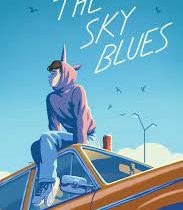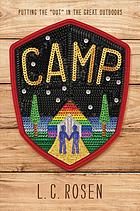Holt, K. A.. Redwood and Ponytail. Chronicle Books. 2019. $18.99. 424p. HC. 9781452172880.
 Redwood and Ponytail is a new addition to the world of queer middle grade fiction. The story is narrated in verse between Tam, a sporty girl as tall as a redwood, and Kate, a cheerleader with a perfect ponytail, as they begin grade 7. Both girls are puzzled to find themselves so interested in this new friendship with someone who doesnít quite fit into their lives. Tam ignores her only friend to spend all her energy on Kate, while Kate has substantially more going on. Her mother wants her to manipulate her way into becoming cheer captain, her adult sister has secretly returned to the town without telling their mother, and her friends are obsessed with a boy band while she only wants to think about Tam. The story leans heavily on Kate to provide the conflict, while Tam balances it out with her confidence and the unconditional queer-positive love and support she gets from the adults in her life. There is something very exciting about a character like Tam, who is comfortable with queerness before discovering that she likes a girl, is read as masculine and is mistaken for a boy, and is popular and confident. Even in YA and adult fiction, it is difficult to find a masculine-of-center girl character, queerness that is neither rejected nor defiantly embraced, or a girl with any trace of confidence. How lovely to find all of those things at once in Tam.
Redwood and Ponytail is a new addition to the world of queer middle grade fiction. The story is narrated in verse between Tam, a sporty girl as tall as a redwood, and Kate, a cheerleader with a perfect ponytail, as they begin grade 7. Both girls are puzzled to find themselves so interested in this new friendship with someone who doesnít quite fit into their lives. Tam ignores her only friend to spend all her energy on Kate, while Kate has substantially more going on. Her mother wants her to manipulate her way into becoming cheer captain, her adult sister has secretly returned to the town without telling their mother, and her friends are obsessed with a boy band while she only wants to think about Tam. The story leans heavily on Kate to provide the conflict, while Tam balances it out with her confidence and the unconditional queer-positive love and support she gets from the adults in her life. There is something very exciting about a character like Tam, who is comfortable with queerness before discovering that she likes a girl, is read as masculine and is mistaken for a boy, and is popular and confident. Even in YA and adult fiction, it is difficult to find a masculine-of-center girl character, queerness that is neither rejected nor defiantly embraced, or a girl with any trace of confidence. How lovely to find all of those things at once in Tam.
It takes a while to figure out how to read the text, which occasionally appears in columns. Each new chapter in their conflict is narrated by a Greek chorus-like gaggle of characters named Alex, Alexx, and Alyx, a not entirely successful gimmick. There is a lot of language about queens and kings ruling the school that is not relevant to the actual conflict, and Tamís friend Levi is built up in the very first Greek chorus as having a larger role than he does. It feels as though there were larger themes that were cut out of the book, leaving pieces that build toward nothing.
The story is strongest when it is playing out between Kate and Tam, whose relationship flows naturally from the moment they meet. Their experiences of figuring out they like girls are age appropriate, as is their pinkie-holding ritual and the ways that they both decide to lash out. Still, there are a few things that make the characters seem closer to 14 or 15. In order to resolve the conflict neatly for the reader, the young charactersí vocabulary expands too much. Tamís observations are insightful, Kateís friendís advice is too mature, and Kateís explanation of her crisis displays way more advanced reasoning than a typical tween. And perhaps it is my own lens as a reviewer from outside of the United States, but the concept of a child having worked her way up to cheer captain by the start of grade 7 is totally foreign to me, as it assumes that she has been cheerleading since at least grade 6. Readers from places where cheerleading is less ubiquitous may struggle to reconcile the idea of this 12-year-old character with the cinematic depiction of cheerleaders who are often played by actors in their 20s or 30s.
Despite these distractions, this is a unique and enjoyable new member of the small family of middle grade books featuring young girls who discover they are queer. Children who are eager for romance but are not ready for the PG-13 and up YA section of the library will be very happy to find this book. Because the story primarily focuses on falling in love and the relationship between the two girls, it could be a very boring read for most children under 11. I would recommended it for kids aged 11-13 looking for a love story written in poetry, and for any kid looking for queer characters like themselves.
Reviewed by Ashley Dunne



